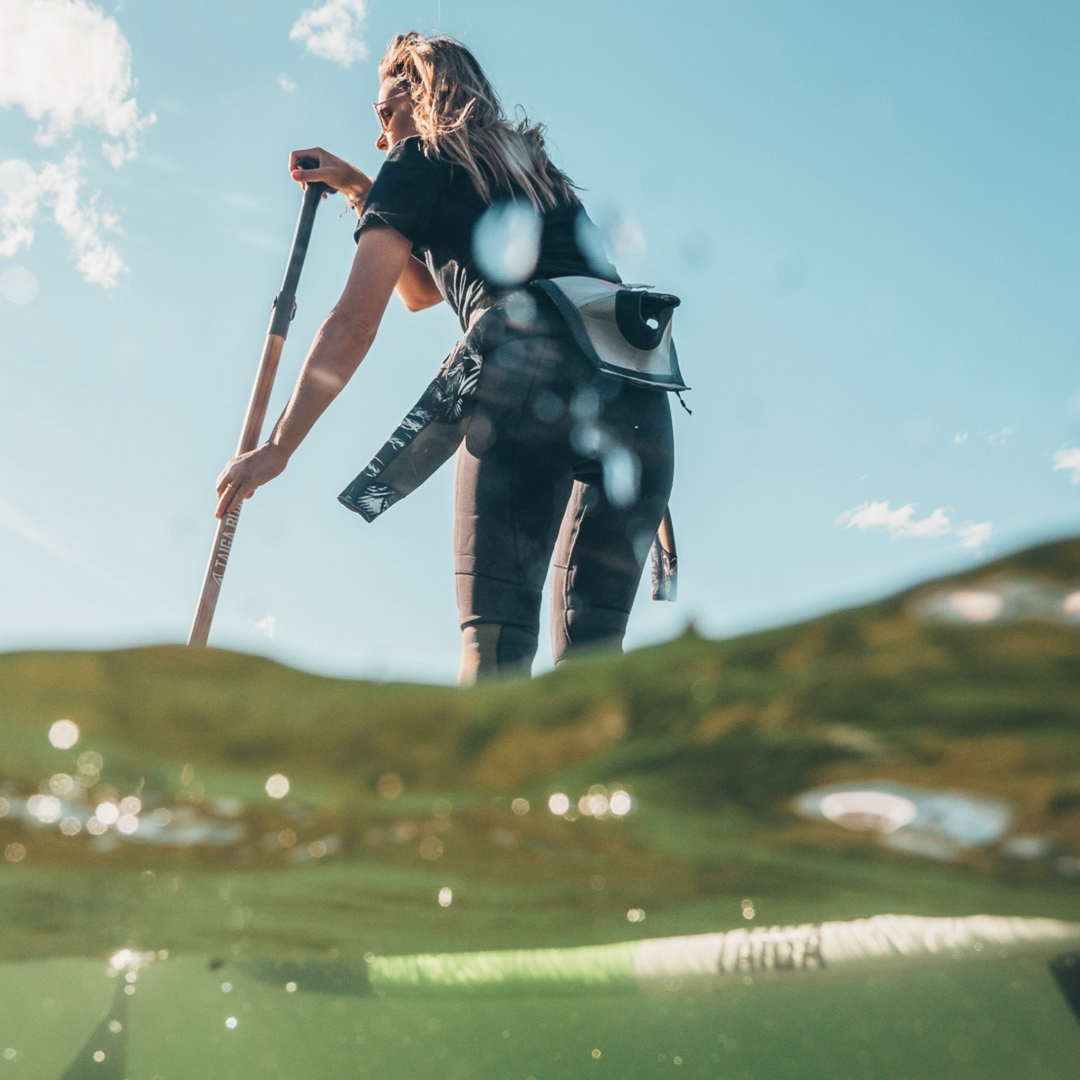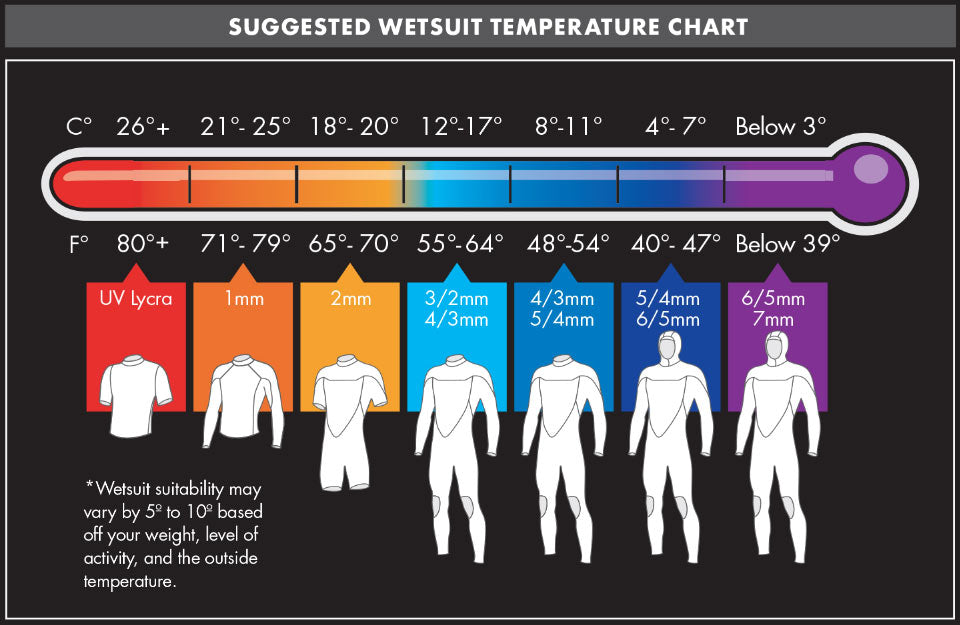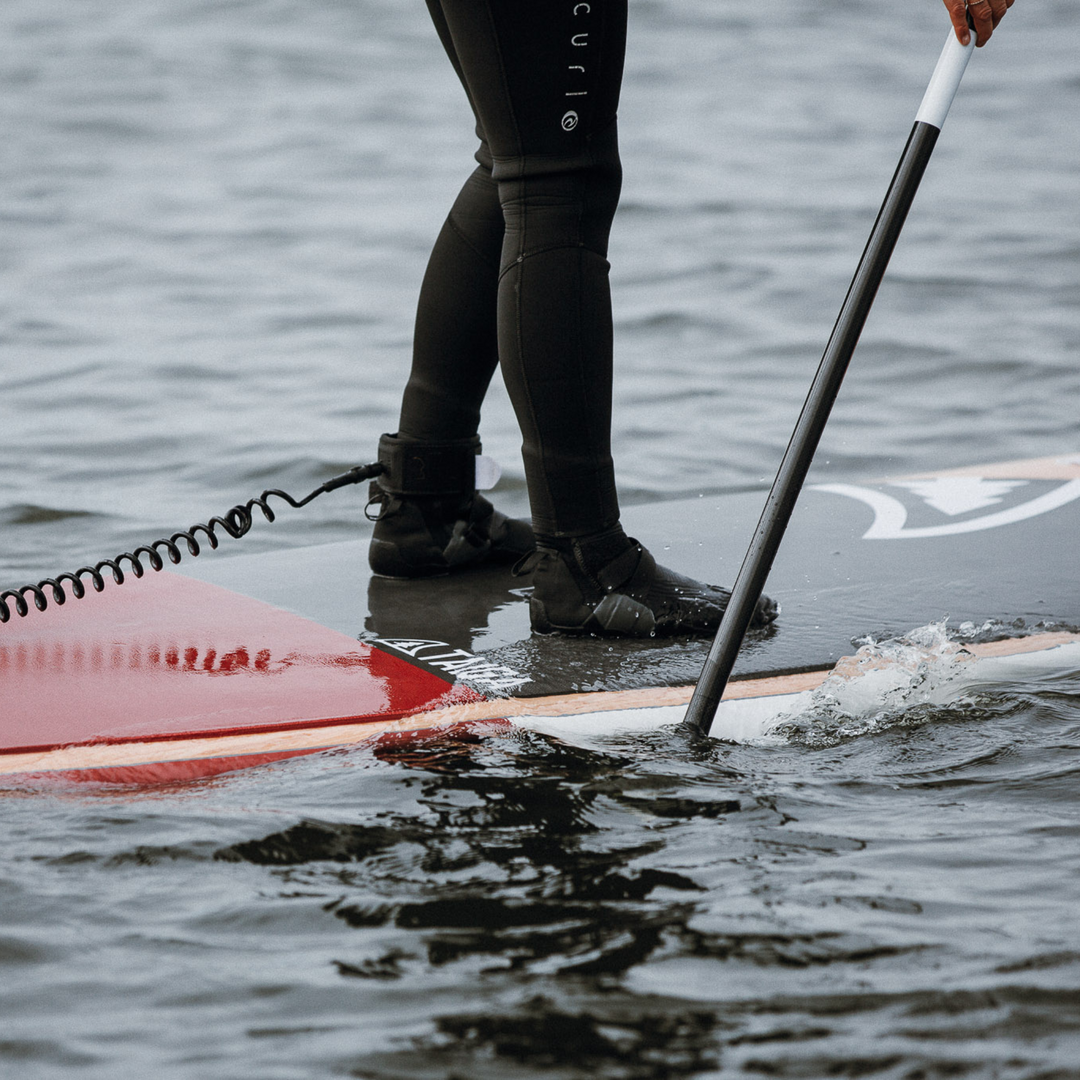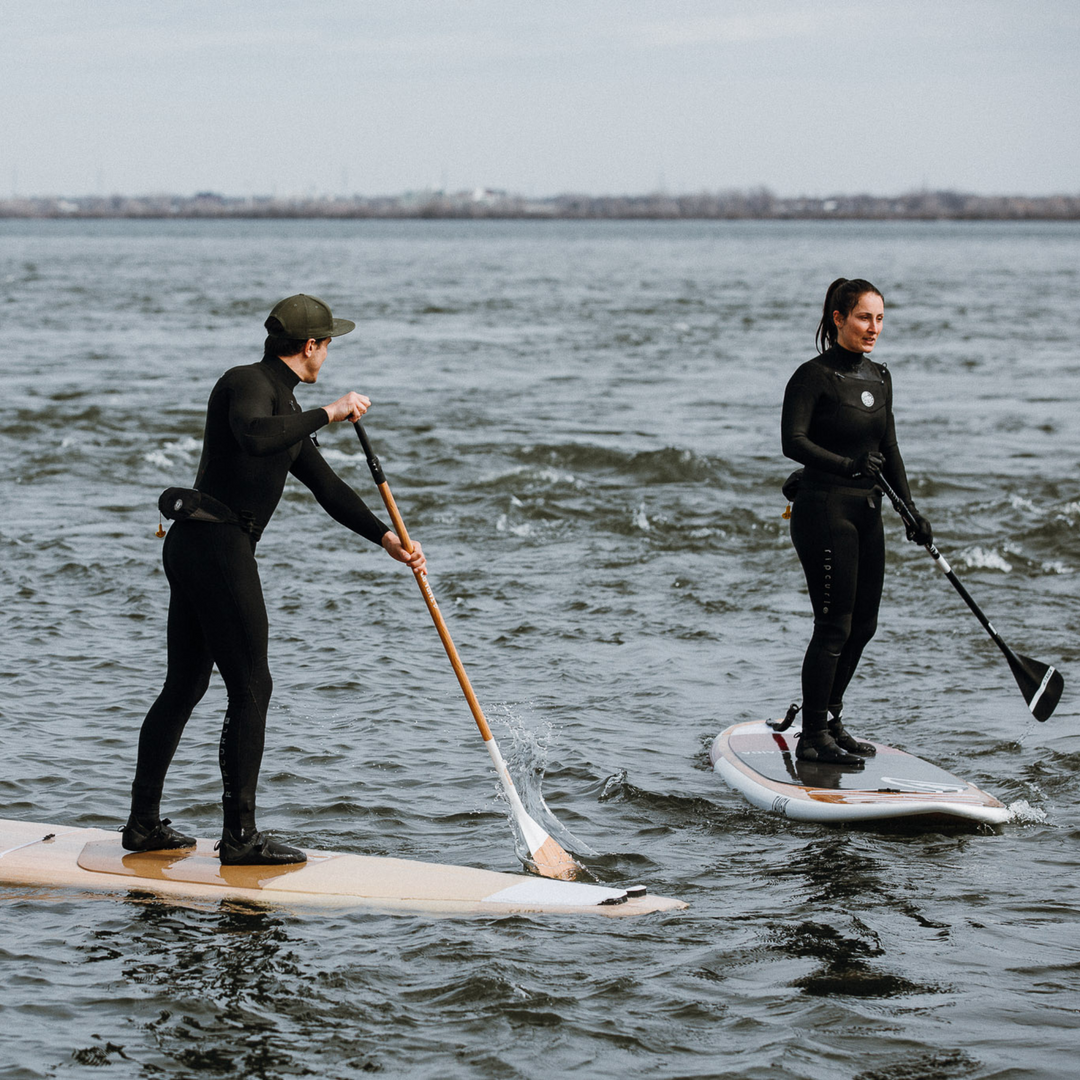Paddle Board in the Spring:
What to Wear?
What to Wear?
Like every other spring, you're always wondering how to properly dress for your paddleboard sessions. The forecast announces cold rain in the morning, and a bright sunny 20 degrees in the afternoon. A real clothing puzzle. Well, know that we have answers to your questions!

In the spring, it is important to keep in mind that even when the temperature outside is mild, the water temperature is a little less so. Imagine falling into water that is 7 degrees Celsius, I guarantee you that the 17 degrees won't do the job of keeping you warm. To avoid a thermal shock if/when falling, an isothermal combination is a must. In other words, a wetsuit.
It depends on both the air and the water temperature. If you're not sure and it's time for you to buy your first wetsuit, your go-to is a 4/3 (4mm thick on the front and rear, 3mm on the sides). It's also important to choose the right size. If too large, air pockets will create in your wetsuit making it way less efficient. How to know what you need? Try it. Be aware that the first time you put on a wetsuit, you may be very hot and find it uncomfortable and tight. It's normal! Don't give up. You'll get used to it! Here is a suggested wetsuit temperature chart:


Because you're not spending your entire time in the water when paddleboarding, accessories are just as important. Let's start with those isothermal boots. As your feet are likely to be in the water most of the time, it's so important to keep them warm. If you don’t have thermal boots, your pretty floral rain boots will do the job. Let's not forget your fingers as they're pretty handy for paddling. That said, bring isothermal gloves or mittens. Again, if you don't have any, opt for quick-drying synthetic fabrics or wool. Bingo!
To enjoy the most your SUP session, you might also need to take with you a few accessories. Good news: we have some pretty neat 20L dry bag to carry your things around without getting them wet.
✓ Personal Flotting Device (PFD) (will also keep you warm!)
✓ Pair of spare gloves
✓ Snacks
✓ Water
✓ Windbreaker


Let's agree, a wetsuit can feel bulky and uncomfortable when it's time to paddle board. It creates resistance on the shoulders and you get tired more quickly. Our solution? Put only the bottom of your wetsuit and bring it up to your hips. Don't wear the top. Instead, wear a thin base layer of merino wool or a synthetic fabric. Merino wool will keep you warm even when wet and synthetic fabrics will dry faster.
If it's really cold outside, you can also add a 2nd layer of clothing. We'll then finish it off with a windbreaker. Therefore, you fall in the water, you'll want to quickly put the top of your wetsuit to warm up, and then put your windbreaker over it. Keep your epic WETSUIT SEASON crewneck for after your session. Keep in mind that cotton is to be avoided. Cotton retains humidity and will keep you cold. No thanks!
✓ Wear the right size wetsuit for the right temperature;
✓ Hands and feet are likely to freeze first, protect them;
✓ Bring extra clothing in your waterproof bag;
✓ Save the cotton batting for after your outing;
✓ Water and food is always important!
If you have questions, we're here!
